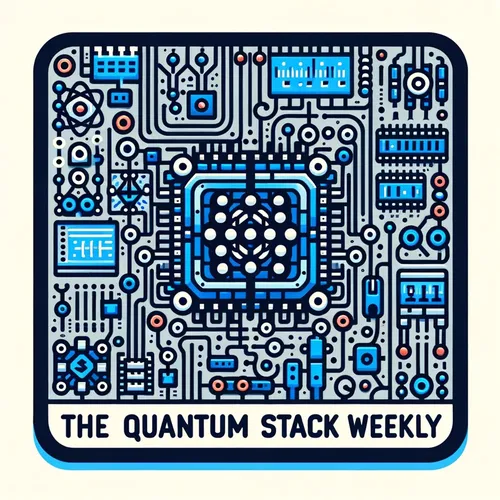Quantum Leaps in Finance: D-Wave's ML Breakthrough | The Quantum Stack Weekly
- Author
- Quiet. Please
- Published
- Thu 10 Apr 2025
- Episode Link
- https://www.spreaker.com/episode/quantum-leaps-in-finance-d-wave-s-ml-breakthrough-the-quantum-stack-weekly--65527600
This is your The Quantum Stack Weekly podcast.
Today, I want to dive right in—a quantum leap, if you will—into a fascinating breakthrough announced just within the last 24 hours. D-Wave, a key player in the quantum computing landscape, has unveiled an innovative quantum machine learning application in the financial sector. The focus? Enhancing predictive models for market trends and risk management. For those just tuning in, this is *The Quantum Stack Weekly*, and I’m Leo, your guide through the quantum multiverse.
Picture this: the global financial market as an incomprehensibly vast chessboard. Classical computers, the silicon soldiers of our time, are adept at linear strategies—step-by-step calculations. But quantum computers? They play in higher dimensions. D-Wave’s announcement sheds light on how their quantum annealing systems, in tandem with machine learning models, are making precise predictions on volatile assets. Their approach leverages quantum Monte Carlo methods to accelerate simulations, a stark improvement over traditional stochastic models. If classical methods were a flashlight in the dark, quantum computation is a floodlight, illuminating fields at once.
What does this mean practically? Let’s say you’re managing a hedge fund. Predicting which asset classes to adjust, and by how much, in real-time as market conditions change is core to your success. Quantum-enhanced machine learning amplifies accuracy and reduces error margins in these predictions. According to D-Wave, their hybrid quantum-classical solution has already demonstrated significant returns for their early adopters in pilot projects.
Now, let’s break down the magic. The phenomenon behind this application is quantum superposition, where particles exist in multiple states simultaneously. In classical finance algorithms, you might model one scenario, run it, and model another independently. Quantum algorithms allow us to explore countless scenarios at the same time, shrinking what could take months of computation into hours or minutes. And here’s the kicker: the Quantum Approximate Optimization Algorithm (QAOA) used here ensures that the most probable solutions emerge from the chaos.
During my morning coffee, I pondered how eerily reflective this "superposition" is of our own decision-making. Consider a bustling stock exchange—it’s humanity’s classical computer, processing bids and offers sequentially. But the human brain, capable of juggling possibilities simultaneously, feels more quantum. This parallel astounds me time and time again.
As I was reviewing this development, I couldn’t help but link it to the upcoming Quantum Computing Applications in Economics and Finance Conference tomorrow at the University of Pennsylvania. Scholars like Jesús Fernández-Villaverde will be discussing exactly these intersections—where quantum computation reshapes our understanding of economics. Today’s announcement by D-Wave underscores how quickly theory is translating to application. We’re no longer speculating about quantum’s potential; we’re realizing it.
Let’s zoom out for context. This breakthrough doesn’t just advance technology—it transforms industries, economies, and even geopolitics. Quantum computing’s ability to optimize resource allocations may determine who leads in global trade or warfare strategies. Imagine a nation using quantum systems to solve logistical puzzles in milliseconds, while others rely on methods developed decades ago. It’s akin to building spaceships in a horse-and-buggy era.
However, it’s worth mentioning that with great power comes great responsibility. Quantum solutions are not immune to misuse, especially in cybersecurity. Quantum-resistant cryptographic methods lag behind the rapid development of systems like D-Wave's. It’s a reminder that even as we celebrate breakthroughs, vigilance is key.
Before I wrap up, here’s something to...
